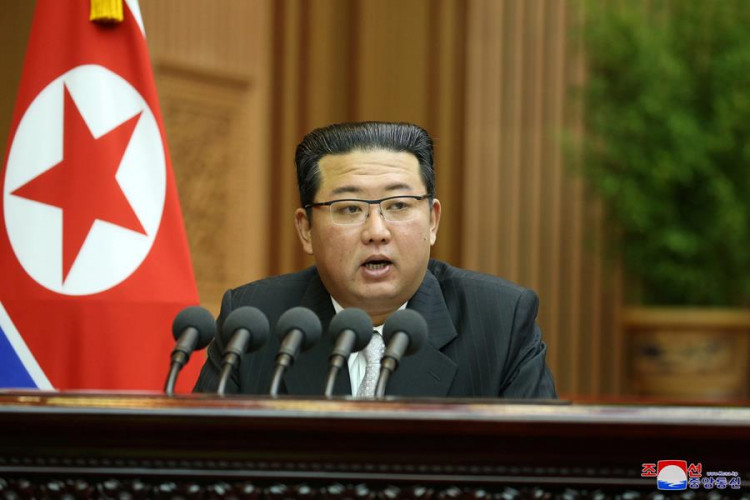North Korea announced the deployment of 250 new tactical ballistic missile launchers near its border with South Korea. This move marks the latest in a series of aggressive postures by Kim Jong Un, the country's leader, as tensions continue to rise on the Korean Peninsula.
Photographs released by North Korean state newspaper Rodong Sinmun revealed rows of vehicle-based missile launchers, with large green military trucks displayed in a meticulously orchestrated ceremony in Pyongyang on Sunday night. Spectators cheered as the vehicles rolled past, and fireworks illuminated the sky in celebration.
Kim Jong Un personally oversaw the transfer of the equipment to military commanders and delivered a speech emphasizing North Korea's readiness for confrontation. "Dialogue or confrontation can be our choice, but what we must be more thoroughly prepared for is confrontation," Kim declared. He warned that if the United States continued to undermine regional security, it would face dire consequences.
The border between North and South Korea is already one of the most heavily militarized in the world. Pyongyang's latest display of military hardware comes during a summer of heightened tensions, exacerbated by North Korea's recent military "strategic partnership" with Russia.
While the photos from the ceremony showed numerous missile launchers, it remains unclear if the vehicles were equipped with functioning missiles. Joseph Dempsey, a research associate for defense and military analysis at the International Institute for Strategic Studies, noted the difficulty in assessing whether any missiles were loaded during the event, adding that it would be "unlikely and illogical based on practicality and safety."
Dempsey suggested that the launchers might be associated with the Hwasong-11D, a short-range ballistic missile that North Korea claims can be armed with a tactical nuclear warhead. However, the actual operational capacity of these launchers and the number of tactical nuclear warheads North Korea possesses remain unverified.
Since its first nuclear test over a decade ago, North Korea has advanced its weapons capabilities, striving to miniaturize warheads to fit on long-range missiles. Although experts believe North Korea has likely developed a small stockpile of nuclear warheads, it is still uncertain whether these can be effectively deployed on missiles.
North Korea's actions follow a pattern of escalating military activity. Late last year, Pyongyang warned it would deploy new military hardware along the military demarcation line separating it from South Korea, after Seoul partially withdrew from a 2018 agreement aimed at easing border tensions. Any goodwill from that agreement has since dissipated, with both nations officially abandoning it.
In response to North Korea's military buildup, the United States, South Korea, and Japan have intensified their military cooperation through exercises and deployments, which Pyongyang views as provocations. Recent months have seen multiple incidents of South Korea firing warning shots at North Korean military personnel crossing the demarcation line.
During Sunday's event, Kim called for an expansion of North Korea's nuclear program, stating that the new missile launchers would provide "overwhelming" firepower against South Korea and enhance the operational efficiency of tactical nuclear weapons. State media photographs depicted lines of army-green launcher trucks and thousands of spectators, highlighting the significance of the occasion.
Kim justified the military buildup as a necessary countermeasure to what he described as the "outrageous" military cooperation between the United States and its regional allies. He framed the confrontation with the U.S. as an enduring struggle that would span generations, underscoring the need for North Korea to continuously strengthen its defense capabilities.
Despite the country's ongoing recovery from severe flooding in late July, which submerged thousands of homes and farmland near the Chinese border, Kim stressed North Korea's determination to bolster its defense capabilities under any circumstances. The floods prompted Russia to offer aid, reflecting the growing ties between the two nations.






